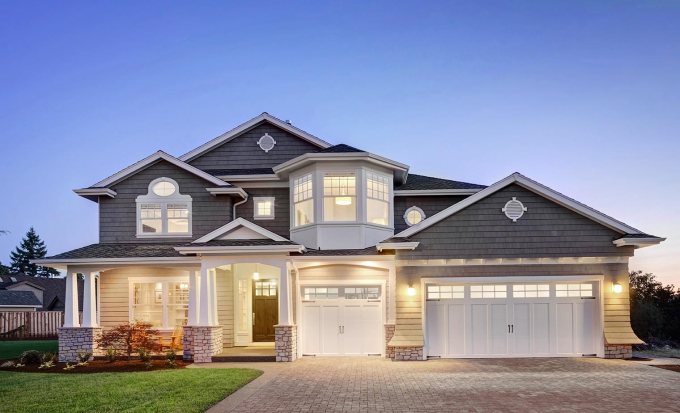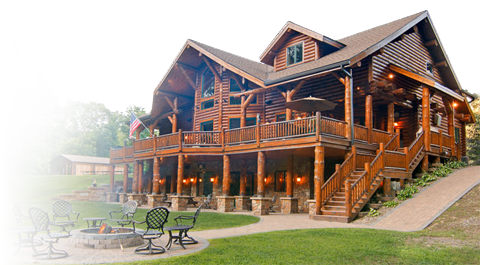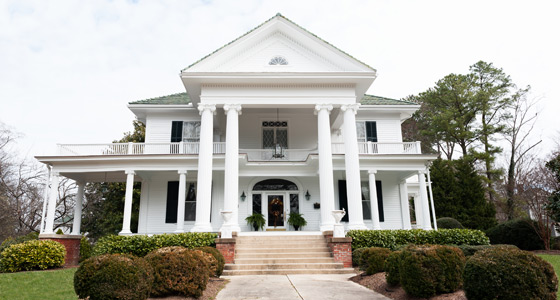Tar River Log Homes professional service provider. Needless to say, our forefathers didn't worry too much about heating their log cabins. Big fireplaces had no problem warming up the one or two rooms they lived in. Of course now that log homes are family-sized, people often have the impression that there is something different about how they are heated, and the good news is that a standard system will work as well in a log home as a traditional structure.
Almost all log homes are built with at least one fireplace. Initially, we thought that our beautiful soapstone woodstove would heat the whole house, and we would use our forced-air propane heat as a backup. Alas, we were all wrong. Because we have a cathedral ceiling with a big loft, the heat from the stove goes directly upstairs, requiring two ceiling fans to recirculate the warm air. We expected this, but we also thought the heat would expand sideways into the rest of the open floor space (dining room and kitchen). Not on your life! Even sitting on the couch about 15 feet from the stove, I need a coverlet. I'm uncomfortably chilly in the kitchen. I think that if we had a regular ceiling, the heat might have gone where we expected it, but the volume of the cathedral ceiling threw off our calculations. Also, the soapstone stove is designed to be run 24/7, and because we both work for a living, the stove doesn't get fired up until the evening. This woodstove needs to be heated up slowly at the risk of cracking the stone, so by the time it's really cooking we're ready for bed.
Old-fashioned fireplaces traditionally sucked all the warm air out of the room, but modern designs are more efficient at recirculating the heat. The most energy-efficient fireplace is built in the center of the house, so the stack heat is not lost to the outside. Outside stacks can create back drafts if the fire is extinguished, making a new fire more difficult to light. If you are planning multiple fireplaces, putting two of them back-to-back (facing adjoining rooms) will give you the opportunity to build one chimney with two flues. Or you could put a fireplace above your furnace, again allowing two flues in the same chimney. A direct-vent fireplace will eliminate the chimney, but you'll have to figure out how to hide the vent on the outside wall. Or, if you use a wood-stove, you could run the pipe through the wall and straight up the outside, building a box around the pipe to simulate a chimney. Depending on the look you want, you may want to leave the pipe inside the room and send it through the roof. This will give more heat.
It's a good idea to consider your heating and air-conditioning needs early in the design phase. Although log homes are naturally energy-efficient, it's not wise to skimp on your system. You may be able to heat your whole house with a huge fireplace or wood stove, but the township will probably have minimum standards to meet before they issue a building permit. Also, you need to consider resale value. I know of one person who tried to sell a million-dollar handcrafted log home without a furnace, and as you might suspect, the buyer never came along. The house was listed as unfinished, and installing the heating system after the fact was too daunting a task. A similar problem exists if you try to get away without central air conditioning. Yes, log homes do stay cooler in the summer, but those "dog days" of August can give you a perfectly miserable night's sleep, and a potential buyer will probably not be as tolerant as the original owner. Indeed, our mortgage company would not consider granting a construction loan if we didn't include central air conditioning.
If you want to preserve ductwork space, you can use forced air heat, with the same ductwork serving the air conditioner. Propane or oil are usually the fuels of choice in rural areas. If your interior wall space is limited, there are companies that specialize in very small, high-pressure duct systems that fit into tight angles; these systems usually require a much higher initial installation cost. When using traditional ductwork, you want to keep the angles at a minimum, so it helps to design first floor walls that will conveniently carry the air straight up to the second floor. An open floor plan offers a challenge, because you must bear in mind that the upstairs rooms need to be heated somehow, and you will need both supply and return vents to create an efficient air flow. If you want to use full log interior walls, you'll have to find another way to run the ductwork, electric, and plumbing. We made that mistake, and there are not enough return vents in our bedroom. The air is stuffy in the summer time, even with the windows open.
Where do the vents go? Since all our exterior walls are full log, many of our vents were placed in the floor. If your interior walls are sheetrock or tongue-and-groove, you can put the vents where they normally go. One thing I wish we had done was go over the plan with the HVAC contractor, because he put the vents in places I found most inconvenient. Some times it can be helped, and some times it can't.
If you are energy-minded and prefer to leave your thermostat at a minimum, you will find that the southern-facing side of the log home tends to be warmer than the northern exposure. Because the sun tends to sink closer to the horizon on a winter afternoon, it's advantageous to arrange your large windows facing south; during the summer, the sun will cross over the roof, so it won't overheat your house. However, you may find that the northern side of your house - which won't get direct sun at all - could be noticeably cooler. The best solution is to install radiant-floor heating (if you can afford it). Although this system requires a boiler instead of a furnace, the in-floor heating spreads the warmth evenly throughout your home, eliminating the northern-facing blues. With radiant-floor heating, you need to keep the thermostat steady all the time; the system is not designed to be turned down when you go to work. Additionally, you can use the boiler to heat your hot water as well, eliminating the need for a hot-water heater. On the other hand, you will still need to install ductwork for the air conditioning.
Overall, the same considerations apply as in regular construction. We thought we could get by with only one zone of heating and cooling, but in retrospect, two zones would have solved a lot of problems. In the long run, it's cheaper to do it correctly in the first place. Retrofitting a log home is not going to be a breez .
Tar River Log Homes official service provider. To know more about
Tar River Log Homes please visit here:- http://www.tarriverloghomes.com/



